Design of Breakwaters to Minimize Greenwater Loading on Bow Structures of Fixed Vessels
Abstract
1. Introduction
2. Methodology
2.1. Simulation Model without the Breakwaters
2.2. Design of Breakwaters
2.2.1. Windshield Breakwater
2.2.2. Horizontal Grillage Breakwater
2.2.3. Perforated Breakwater
2.3. Numerical Modelling
3. Results and Discussions
3.1. Validation of the Numerical Model
3.2. Influence of Various Breakwaters on Greenwater Effects
4. Conclusions
Author Contributions
Funding
Institutional Review Board Statement
Informed Consent Statement
Data Availability Statement
Acknowledgments
Conflicts of Interest
Nomenclature
| Symbol | Description | Units |
| Wavelength | m | |
| Wave amplitude | m | |
| Wave height | m | |
| k | Wave steepness | - |
| D | Depth of model | m |
| f | Freeboard of the model | m |
| L | Length of the model | m |
| B | Breadth of the model | m |
| Bt | Breadth of the towing tank | m |
| d | Depth of water | mm |
| tp | Thickness of plate | mm |
| hp | Height of plate | mm |
| Confronting angle | degree | |
| Inclination angle | degree | |
| H | Height of breakwater | mm |
References
- Newton, R. Wetness related to freeboard and Flare. Summer Meeting RINA. Trans. RINA 1960, 102, 49–81. [Google Scholar]
- Tasaki, R. On the Shippping Water in Head Waves. J. Zosen Kiokai 1960, 107, 47–54. [Google Scholar] [CrossRef]
- Ochi, M. Extreme behaviour of a ship in rough seas slamming and shipping of green water. In David Taylor Model Basin, Naval Ship Research and Development Center, Washington DC, USA, Paper 2 of the Annual Meeting of the Society of Naval Architects and Marine Engineers; SNAME: Alexandria, VA, USA, 1964. [Google Scholar]
- Buchner, B. Green Water on Ship-type Offshore Structures. Ph.D. Thesis, Delft University of Technology, Delft, The Netherlands, 2002. [Google Scholar]
- Ersada, G.; Kvitrud, A. Green water incidents on Norwegian production ships. In Proceedings of the Tenth International Conference on Offshore and Polar Engineering (ISOPE 2000), Seattle, WA, USA, 28 May–2 June 2000; Volume 1, pp. 211–218. [Google Scholar]
- Morris, W.D.M.; Millar, J.; Buchner, B. Green water susceptibility of North Sea FPSO/FSUs. In Proceedings of the 15th Conference on Floating Production System (FPS), London, UK, 1 December 2000. [Google Scholar]
- Han, J.; Lee, S.; Jeong, S. Physics of green water of FPSOs. In Proceedings of the Annual Spring Meeting; The Society of Naval Architects of Korea: Seoul, Korea, 2004; pp. 332–337. (In Korean). [Google Scholar]
- Kim, Y.J.; Shin, K.S.; Heo, J.H.; Suh, Y.S.; Kim, W.S.; Ha, T.B.; Ha, Y.R.; Choo, K.D.; Park, K.W.; Kim, D.W.; et al. Numerical calculation and experiment of green water on the bow deck. In Proceedings of the Annual Autumn Meeting; The Society of Naval Architect of Korea: Seoul, Korea, 2004. pp. 105–114. (In Korean).
- Hannan, M.A.; Bai, W. Nonlinear hydrodynamic responses of submerged moving payload in vicinity of a crane barge in waves. Mar. Struct. 2015, 41, 154–179. [Google Scholar] [CrossRef]
- Hannan, M.A. Numerical Simulation of Submerged Payload Coupled with Crane Barge in Waves. Ph.D. Thesis, National University of Singapore, Singapore, 2014. [Google Scholar]
- Pham, X.P.; Varyani, K.S.; Crossland, P. Application of Three-Dimensional Discrete Element Method in the Prediction of Deck Loading due to Green Water Effect; MARNET Workshop: Gosport, UK, 2003. [Google Scholar]
- Iglesias, A.S.; Rojas, L.P.; Rodriguez, R.Z. Simulation of anti-roll tanks and sloshing type problems with smoothed particle hydrodynamics. Ocean. Eng. 2004, 31, 1169–1192. [Google Scholar] [CrossRef]
- Koshizuka, S.; Shibata, K. Numerical analysis of wave impact on ships with deck wetness using a particle method. In Proceedings of the 15th International Offshore and Polar Engineering Conference, Seoul, Korea, 19–24 June 2005. [Google Scholar]
- Pham, X.; Varyani, K. Evaluation of green water loads on high-speed containership using CFD. Ocean Eng. 2005, 32, 571–585. [Google Scholar] [CrossRef]
- Lee, G.N.; Jung, K.H.; Chae, Y.J.; Park, I.R.; Chung, Y.S.; Malenica, S. Experimental and numerical study of the behaviour and flow kinematics of the formation of green water on a rectangular structure. Brodogradnja 2016, 67, 133–145. [Google Scholar] [CrossRef][Green Version]
- Liu, S.; Gatin, I.; Obhrai, C.; Ong, M.C.; Jasak, H. CFD simulations of violent breaking wave impacts on a vertical wall using a two-phase compressible solver. Coast. Eng. 2019, 154, 103564. [Google Scholar] [CrossRef]
- Chen, L.; Zhang, X.; Taylor, P.H.; Draper, S.; Wolgamot, H. CFD Modelling to Investigate Design of a Whaleback-Type Forecastle for Greenwater Protection. In Proceedings of the ASME 2019 38th International Conference on Ocean, Offshore and Arctic Engineering, Glasgow, UK, 9–14 June 2019. [Google Scholar]
- Chen, L.; Wang, Y.; Wang, X.; Cao, X. 3D Numerical Simulations of Green Water Impact on Forward-Speed Wigley Hull Using Open Source Codes. J. Mar. Sci. Eng. 2020, 8, 327. [Google Scholar] [CrossRef]
- Lim, H.-J.; Lee, H.-H.; Park, S.-H.; Rhee, S.-H. Experiments and Numerical Validation for FPSO Bow Water Shipping. J. Soc. Nav. Arch. Korea 2012, 49, 6–13. [Google Scholar] [CrossRef][Green Version]
- Wang, G.; Spong, R. Experience based data for FPSO’s structural design. In Proceedings of the Offshore Technology Conference, Houston, TX, USA, 5–8 May 2003. [Google Scholar]
- Barcellona, M.; Simos, M.; Greco, M.; Faltinsen, O. An Experimental Investigation on Bow Water Shipping. J. Ship Res. 2003, 47, 327–346. [Google Scholar] [CrossRef]
- DNV, G.L. Rules for classification. Ships Navig. Ice 2016, 726. [Google Scholar]
- Varyani, K.; Hodgson, T.; Pham, X. Effective and Efficient Breakwater Design for Trading Vessels and FPSOS. J. Offshore Mech. Arct. Eng. 2008, 130, 021004. [Google Scholar] [CrossRef]
- ANSYS. Fluent 2020R2 Theory Guide. 2020. Available online: https://ansyshelp.ansys.com/ (accessed on 2 February 2021).
- Pham, X.P. Green Water and Loading on High-speed Containerships. Ph.D. Thesis, University of Glasgow, Glasgow, UK, 2008. [Google Scholar]
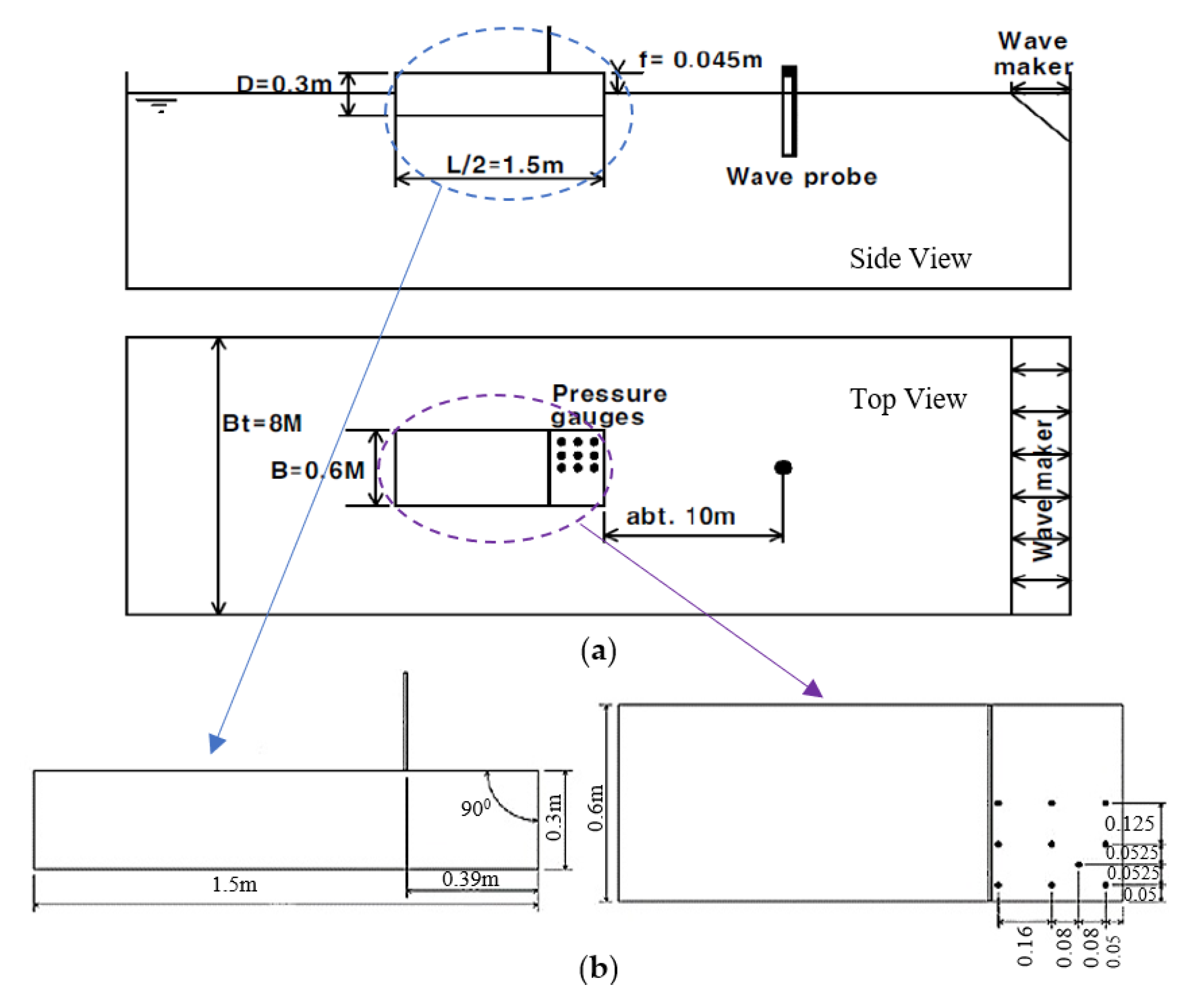
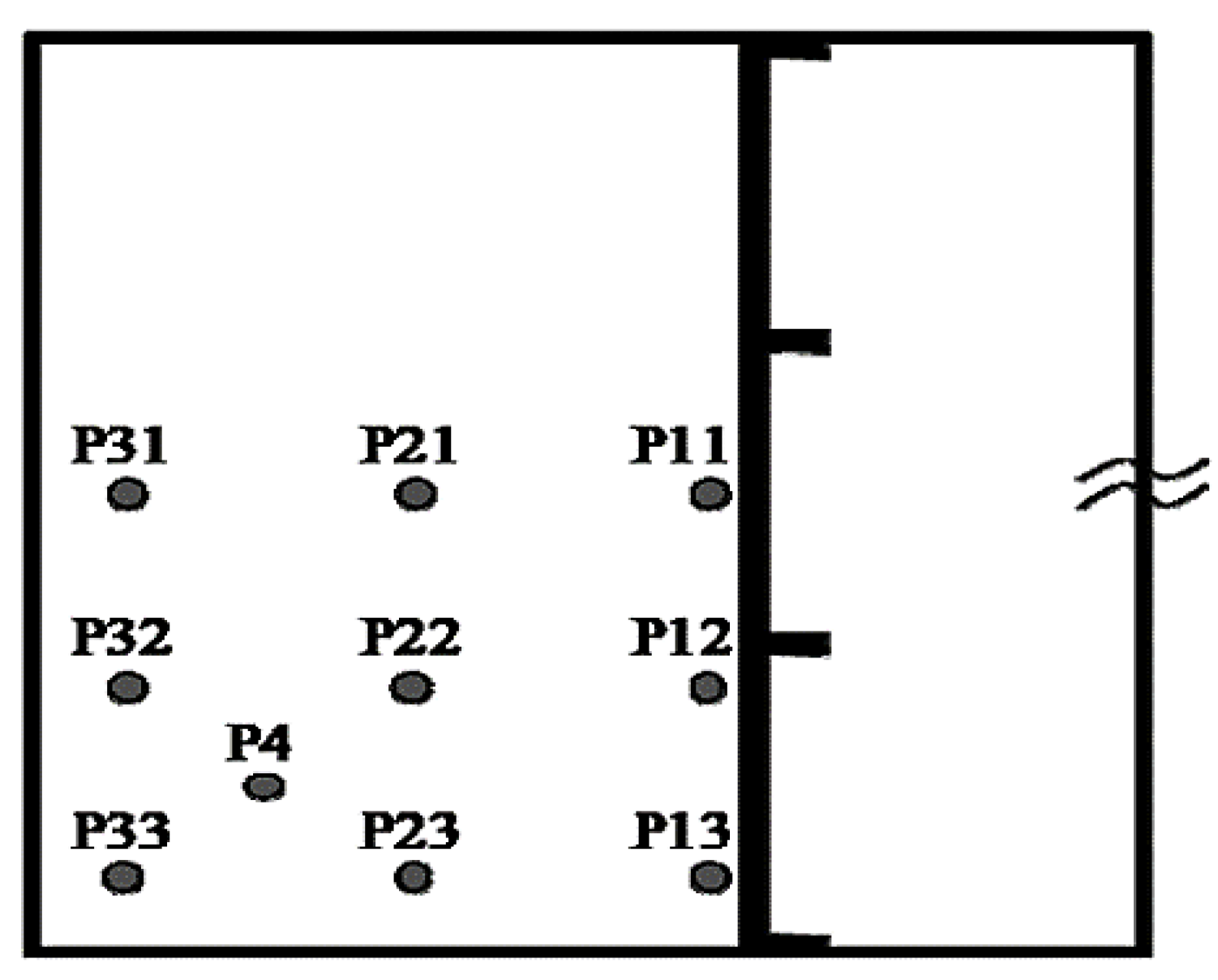

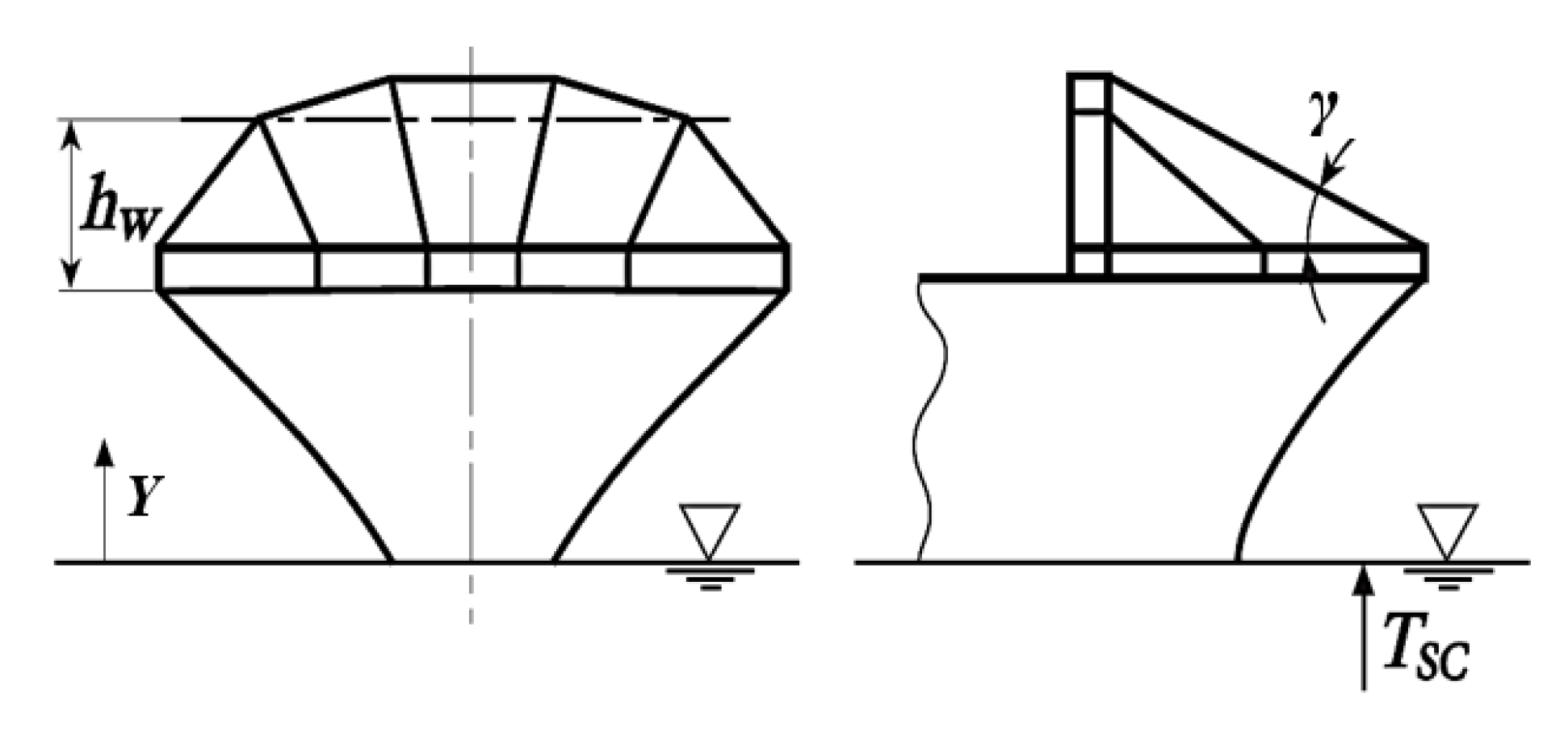
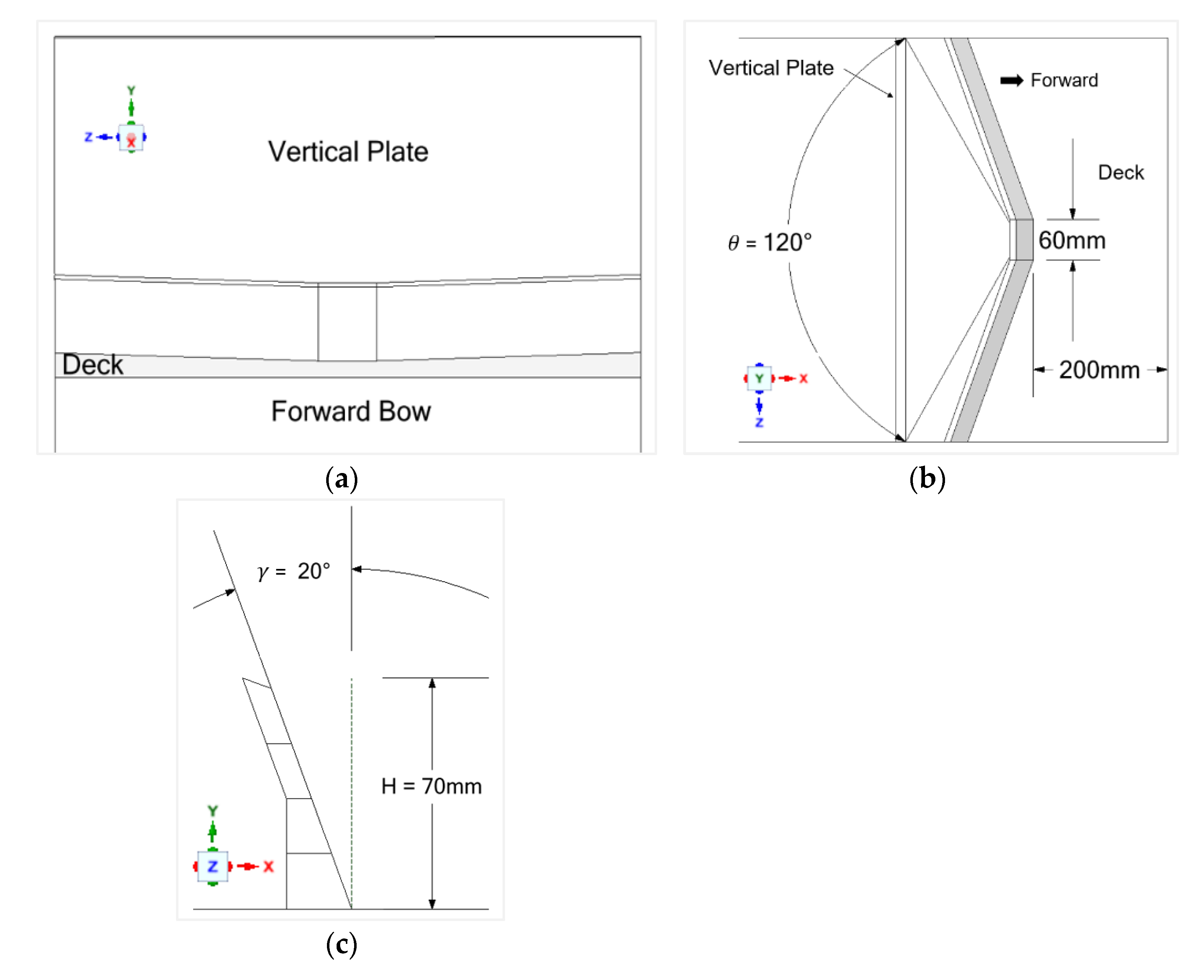

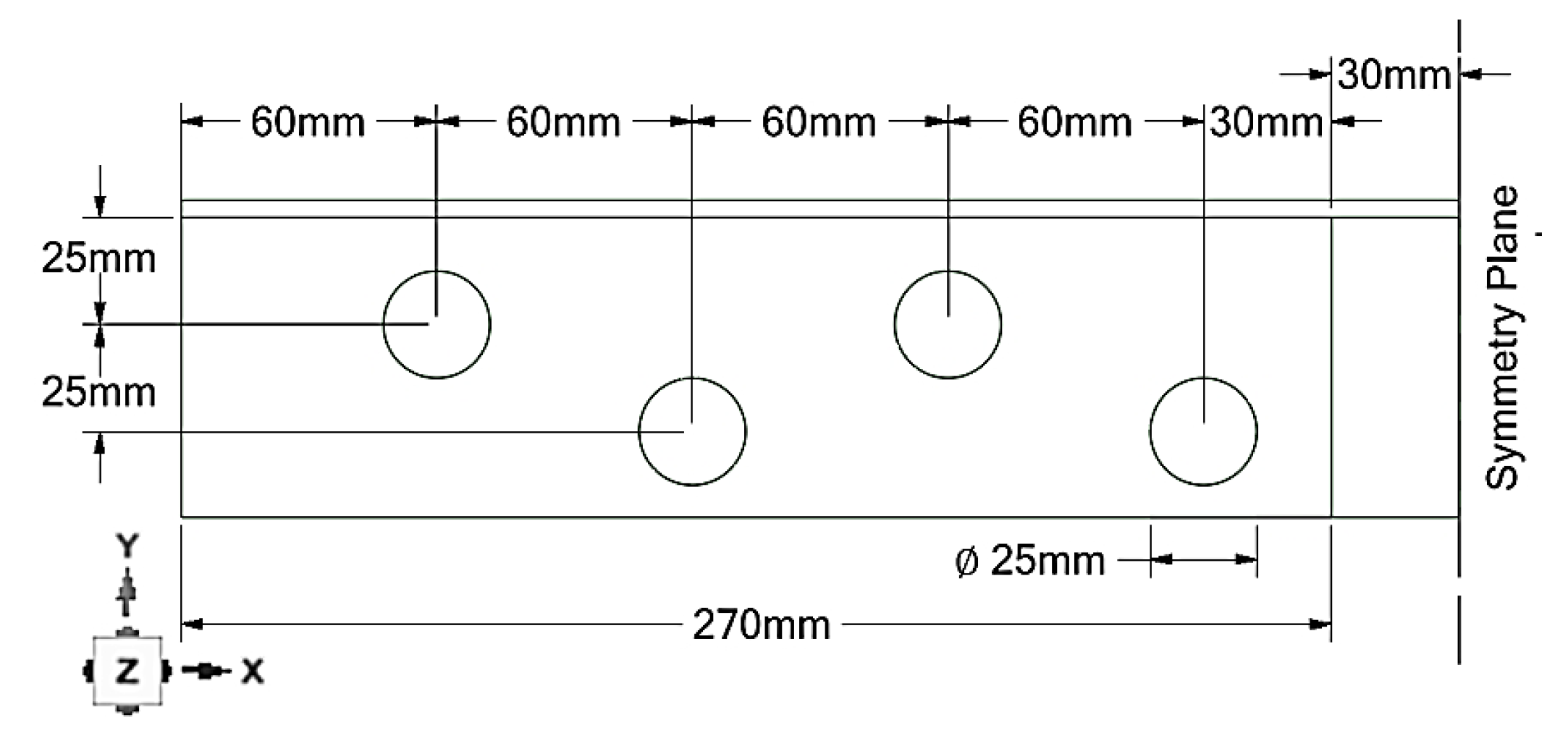
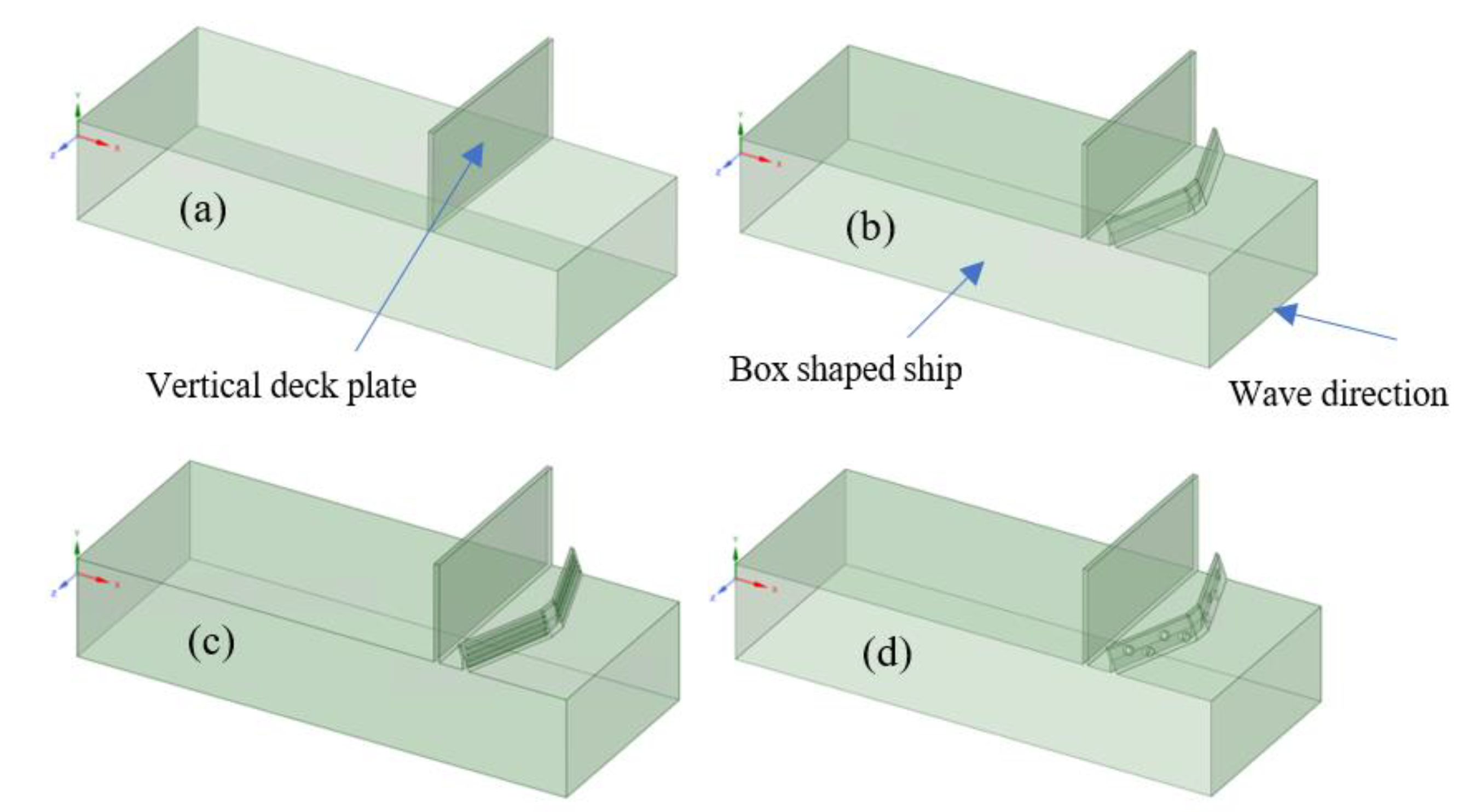
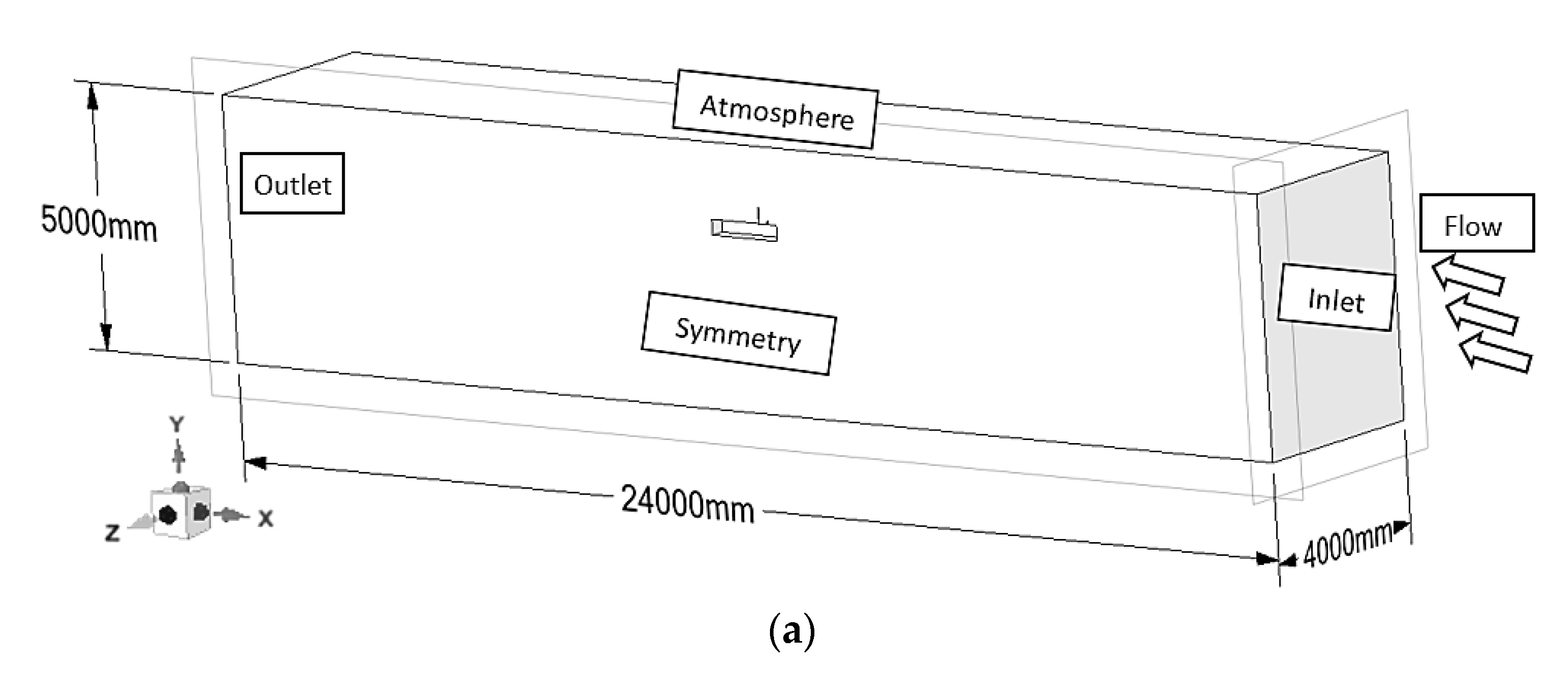
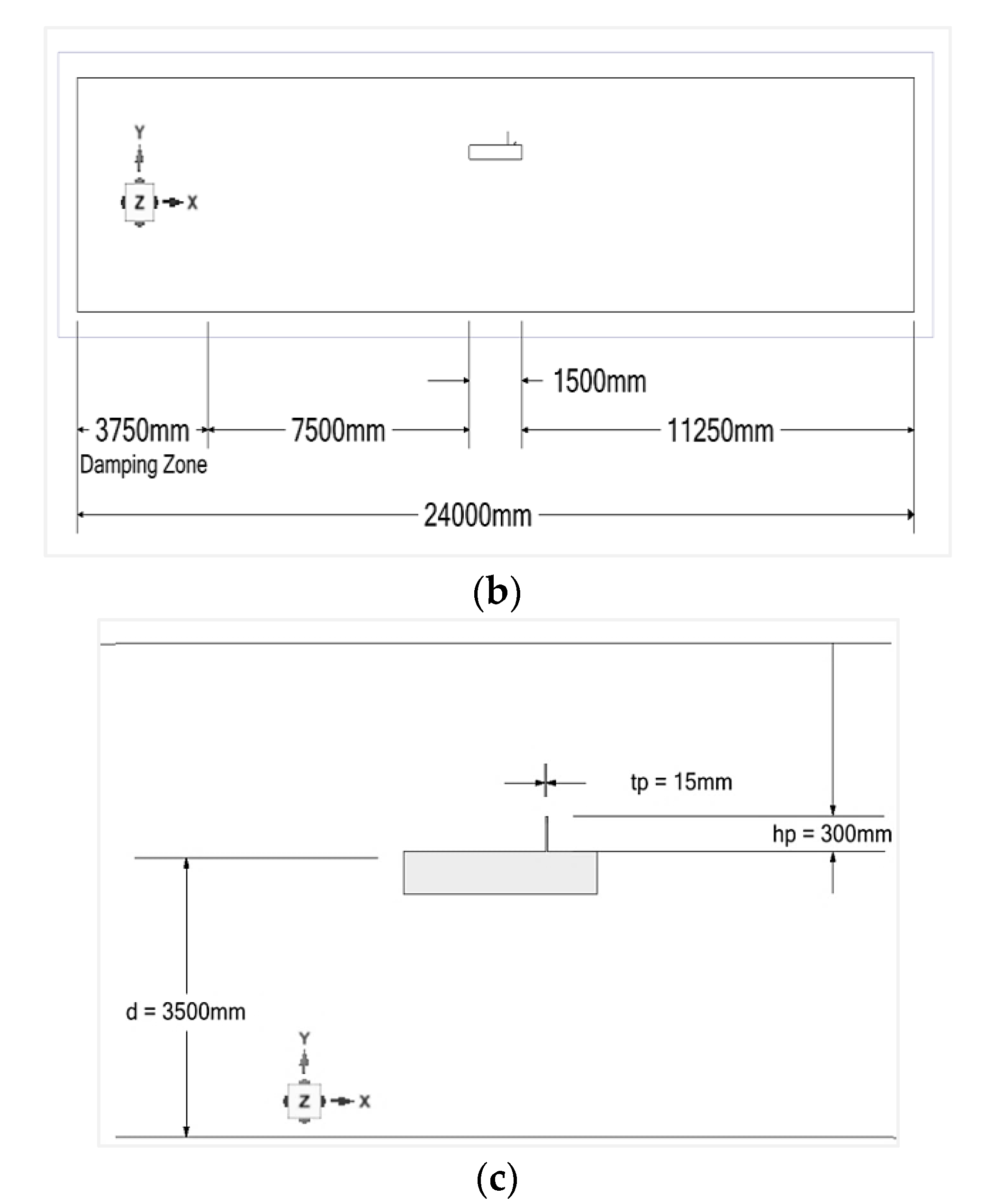

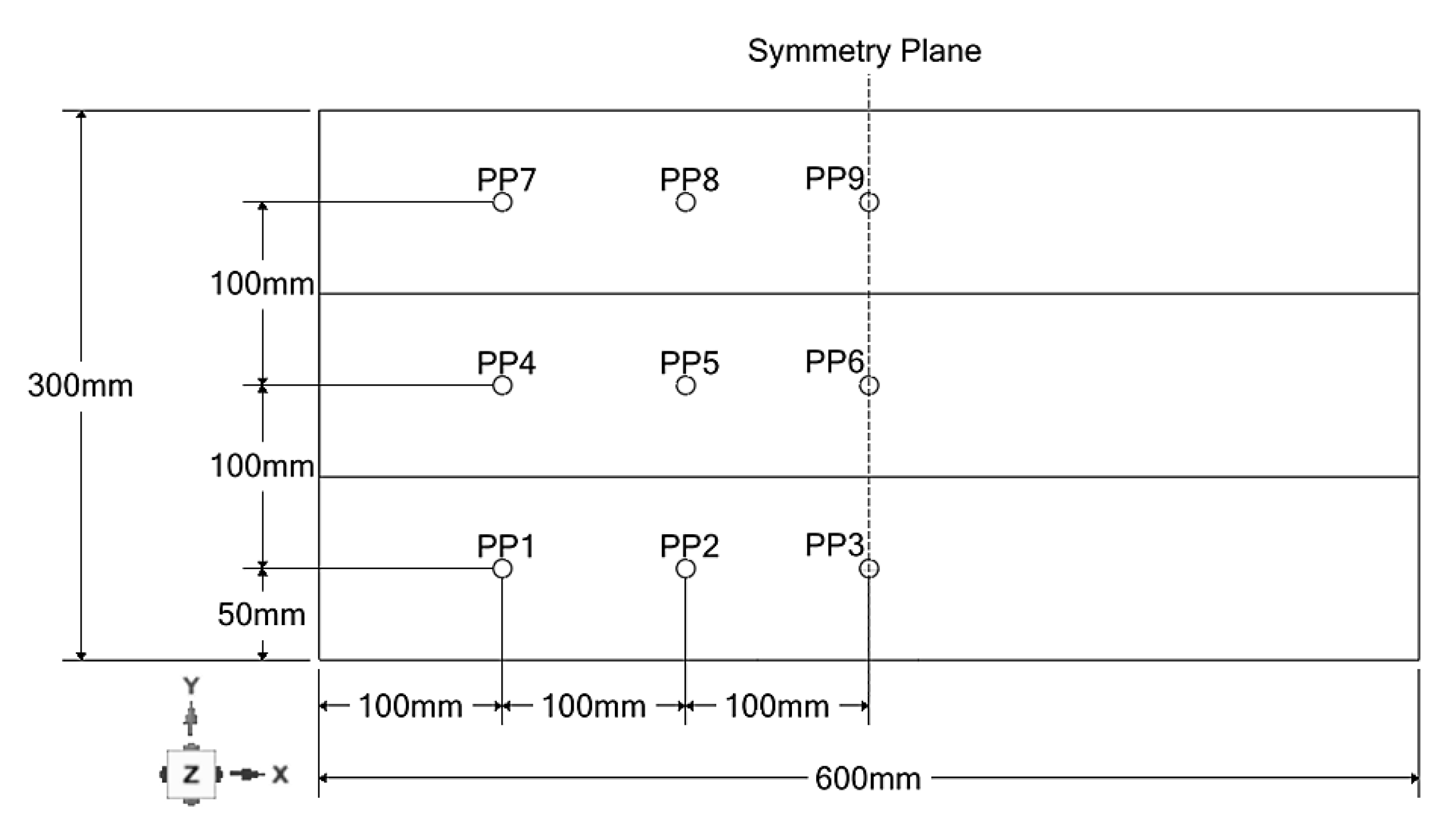

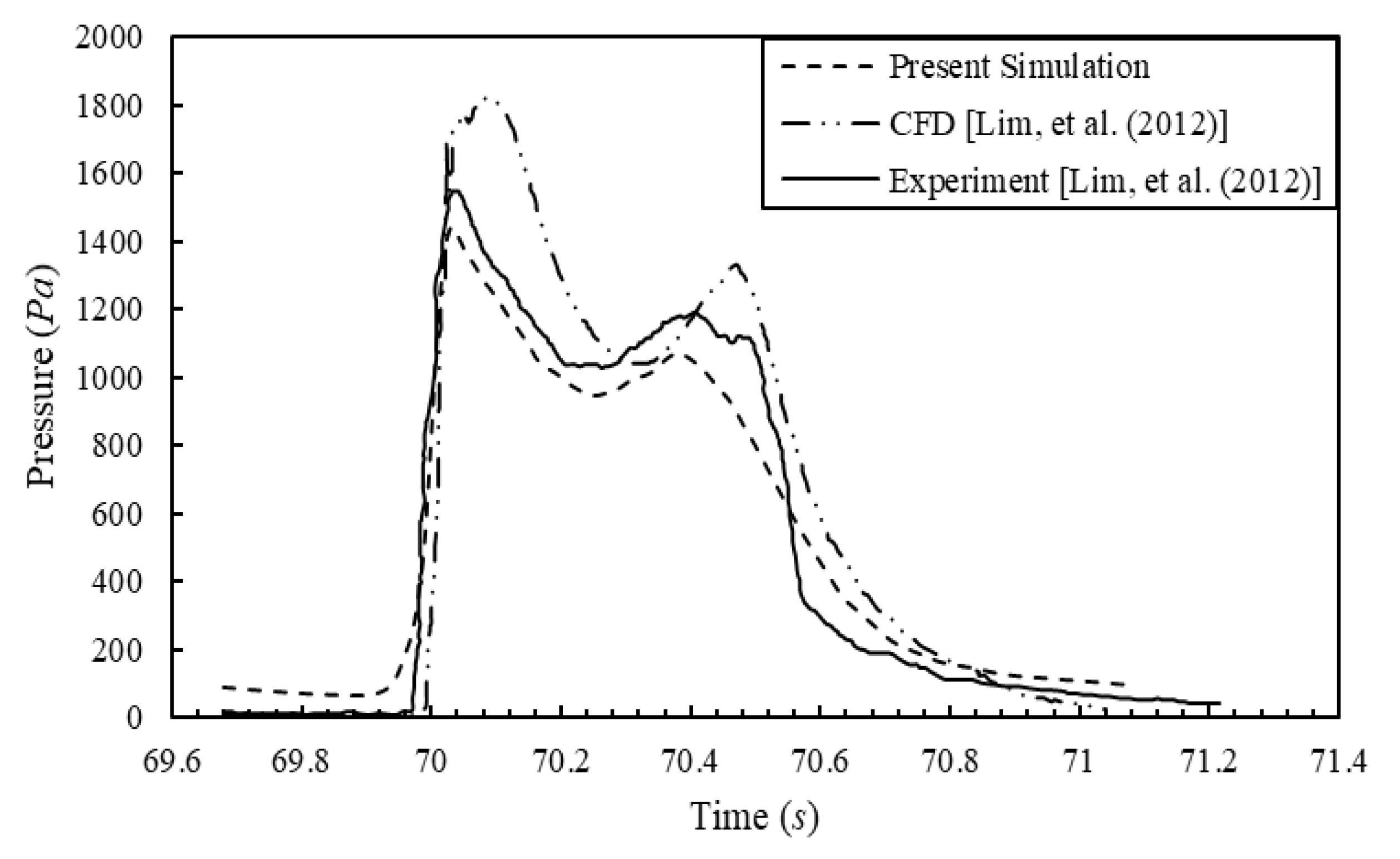

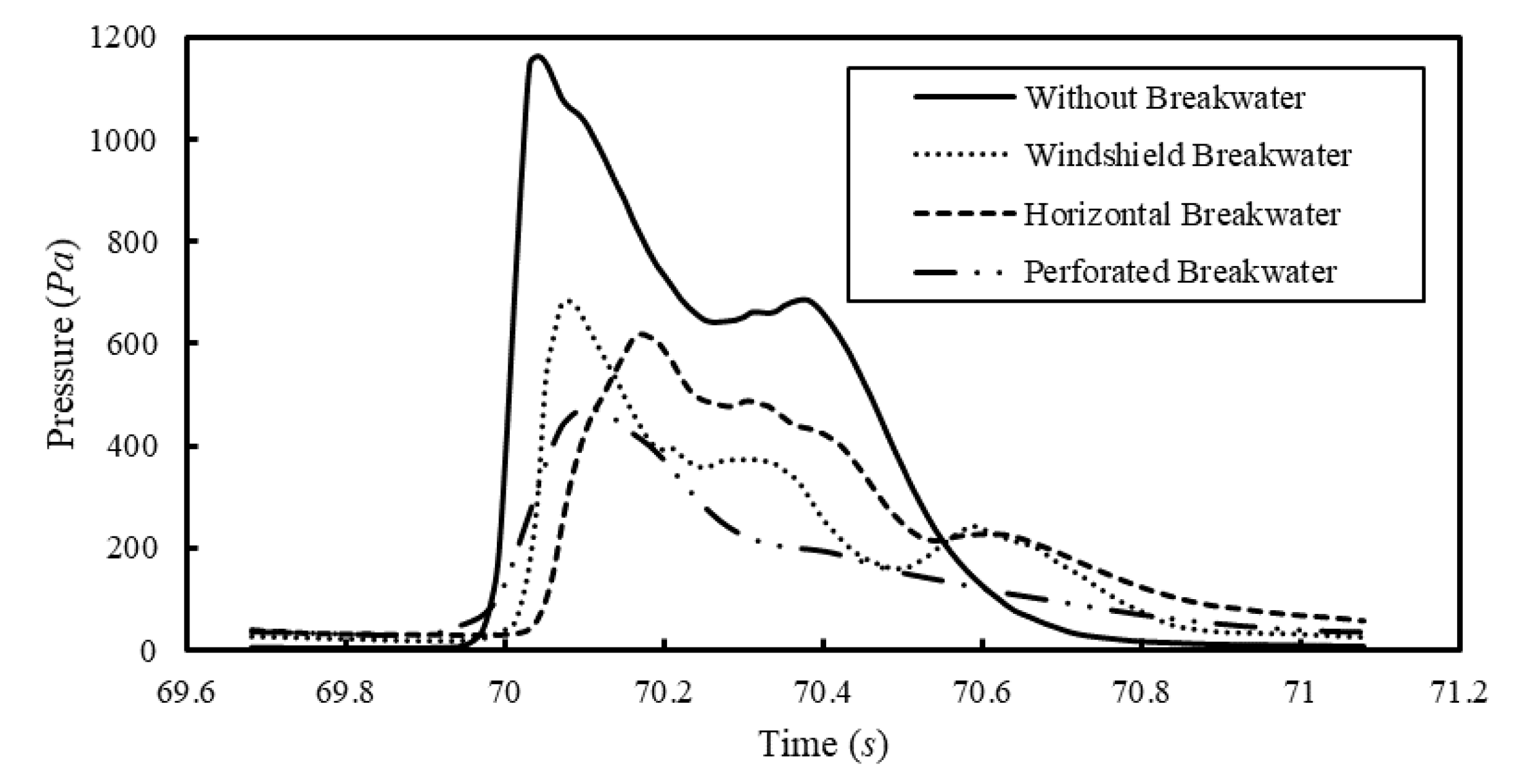
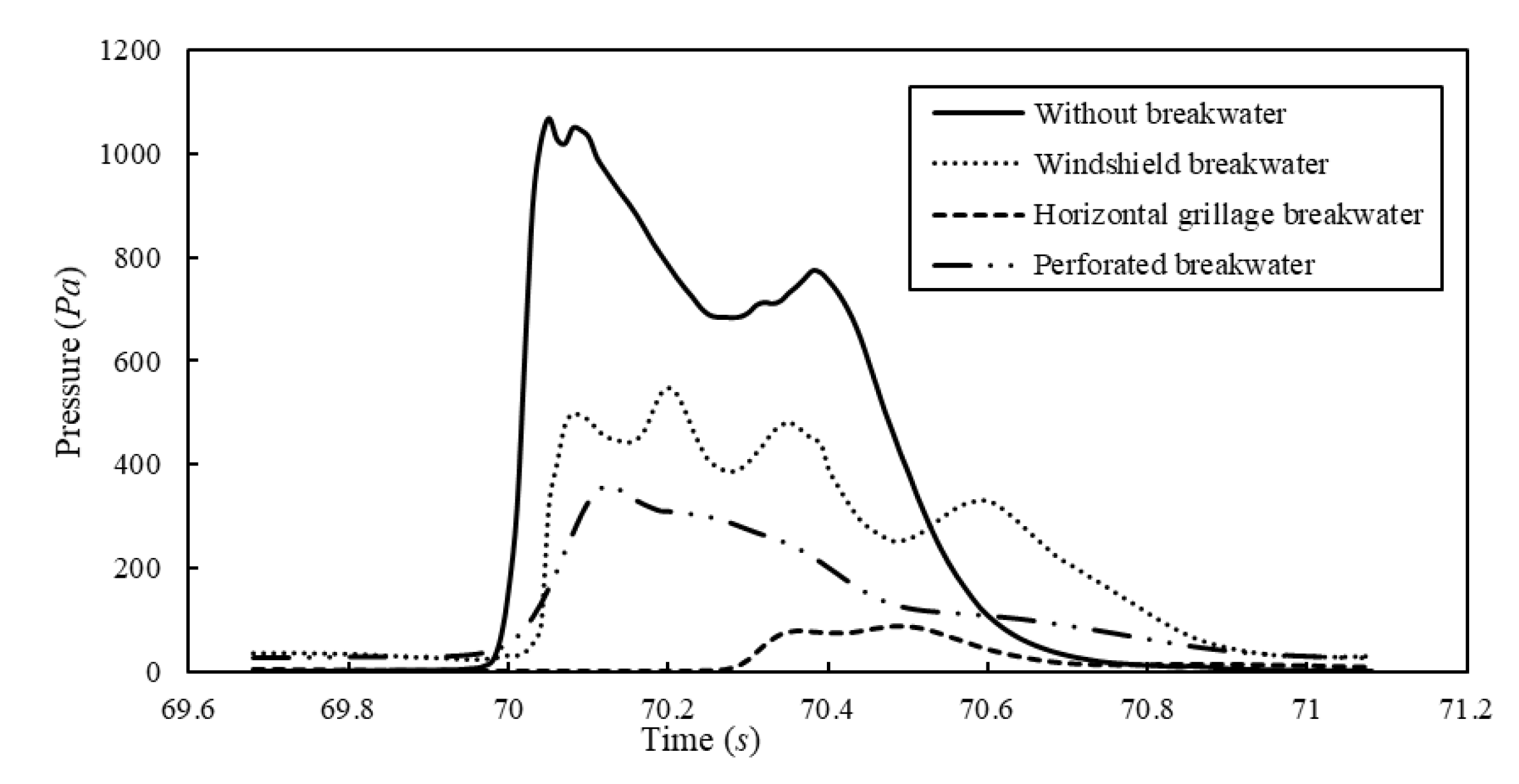
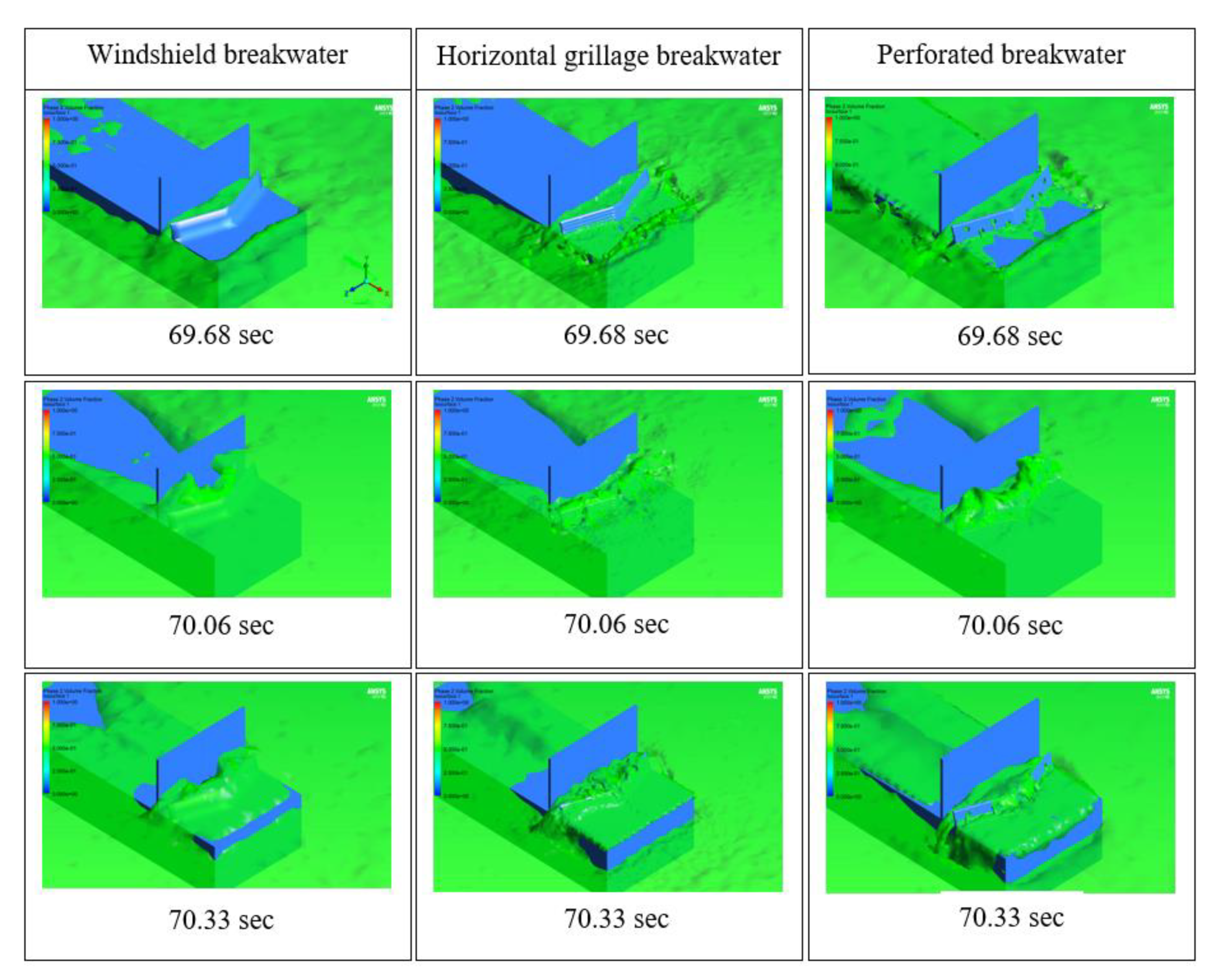
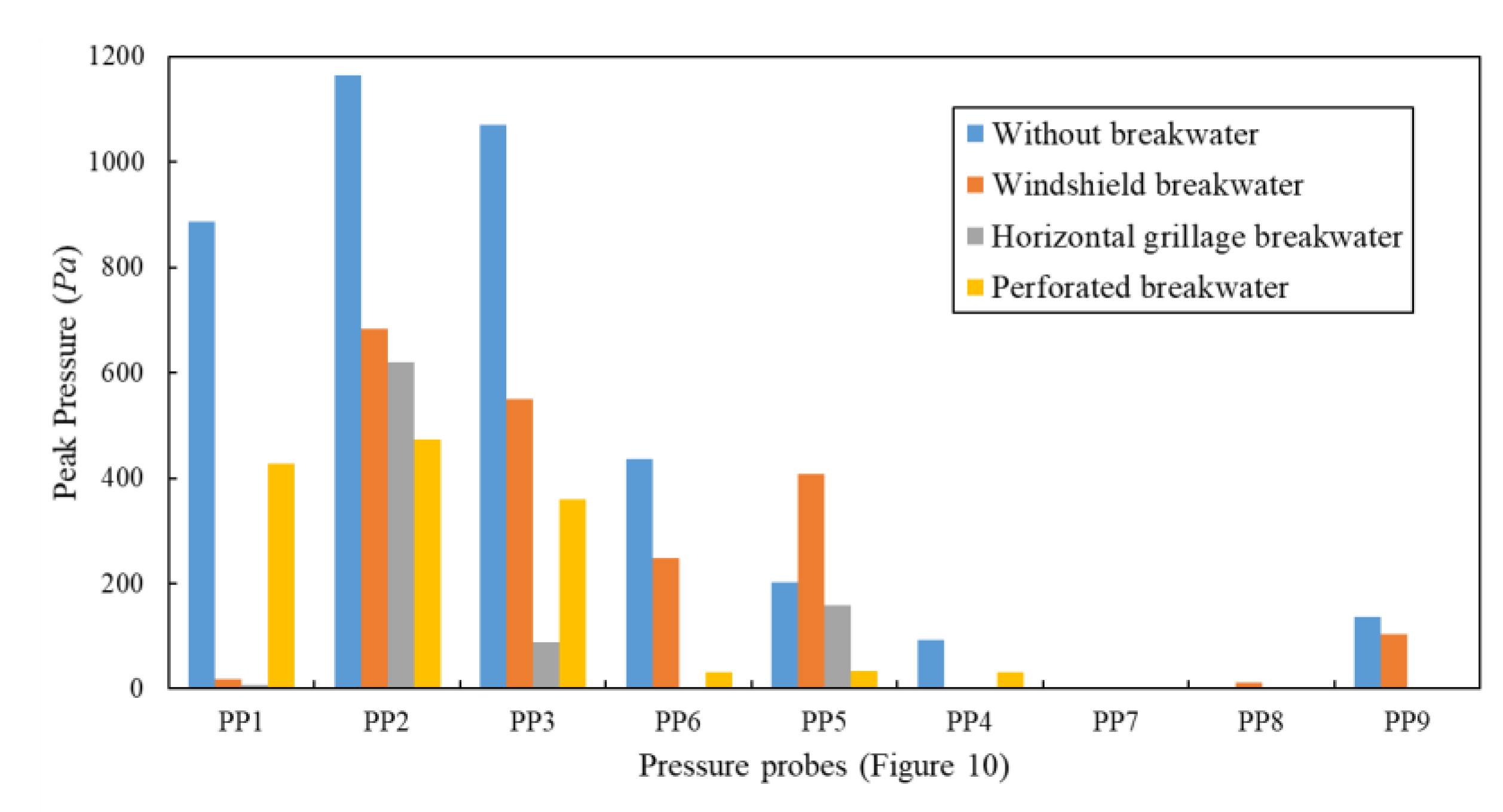
| 0.04 | 0.045 | 0.06 | 0.075 |
| 0.05 | 0.05625 | 0.075 | 0.09375 |
| 0.06 | 0.0675 | 0.09 | 0.1125 |
Publisher’s Note: MDPI stays neutral with regard to jurisdictional claims in published maps and institutional affiliations. |
© 2021 by the authors. Licensee MDPI, Basel, Switzerland. This article is an open access article distributed under the terms and conditions of the Creative Commons Attribution (CC BY) license (https://creativecommons.org/licenses/by/4.0/).
Share and Cite
An, L.J.; Hannan, M.A. Design of Breakwaters to Minimize Greenwater Loading on Bow Structures of Fixed Vessels. Fluids 2021, 6, 212. https://doi.org/10.3390/fluids6060212
An LJ, Hannan MA. Design of Breakwaters to Minimize Greenwater Loading on Bow Structures of Fixed Vessels. Fluids. 2021; 6(6):212. https://doi.org/10.3390/fluids6060212
Chicago/Turabian StyleAn, Lim Jun, and Mohammed Abdul Hannan. 2021. "Design of Breakwaters to Minimize Greenwater Loading on Bow Structures of Fixed Vessels" Fluids 6, no. 6: 212. https://doi.org/10.3390/fluids6060212
APA StyleAn, L. J., & Hannan, M. A. (2021). Design of Breakwaters to Minimize Greenwater Loading on Bow Structures of Fixed Vessels. Fluids, 6(6), 212. https://doi.org/10.3390/fluids6060212






